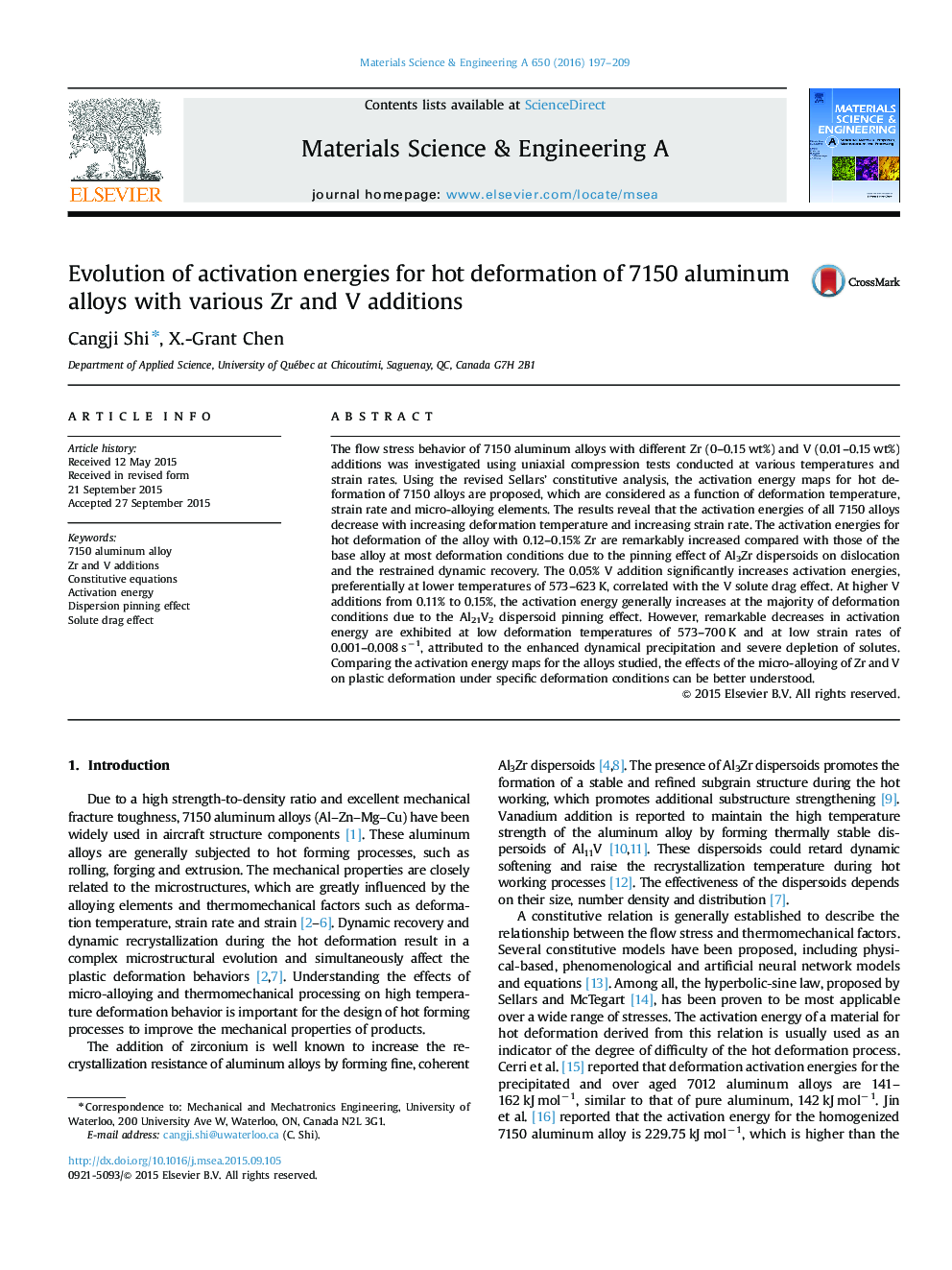| کد مقاله | کد نشریه | سال انتشار | مقاله انگلیسی | نسخه تمام متن |
|---|---|---|---|---|
| 7976373 | 1514693 | 2016 | 13 صفحه PDF | دانلود رایگان |
عنوان انگلیسی مقاله ISI
Evolution of activation energies for hot deformation of 7150 aluminum alloys with various Zr and V additions
دانلود مقاله + سفارش ترجمه
دانلود مقاله ISI انگلیسی
رایگان برای ایرانیان
کلمات کلیدی
موضوعات مرتبط
مهندسی و علوم پایه
مهندسی مواد
دانش مواد (عمومی)
پیش نمایش صفحه اول مقاله

چکیده انگلیسی
The flow stress behavior of 7150 aluminum alloys with different Zr (0-0.15Â wt%) and V (0.01-0.15Â wt%) additions was investigated using uniaxial compression tests conducted at various temperatures and strain rates. Using the revised Sellars' constitutive analysis, the activation energy maps for hot deformation of 7150 alloys are proposed, which are considered as a function of deformation temperature, strain rate and micro-alloying elements. The results reveal that the activation energies of all 7150 alloys decrease with increasing deformation temperature and increasing strain rate. The activation energies for hot deformation of the alloy with 0.12-0.15% Zr are remarkably increased compared with those of the base alloy at most deformation conditions due to the pinning effect of Al3Zr dispersoids on dislocation and the restrained dynamic recovery. The 0.05% V addition significantly increases activation energies, preferentially at lower temperatures of 573-623Â K, correlated with the V solute drag effect. At higher V additions from 0.11% to 0.15%, the activation energy generally increases at the majority of deformation conditions due to the Al21V2 dispersoid pinning effect. However, remarkable decreases in activation energy are exhibited at low deformation temperatures of 573-700Â K and at low strain rates of 0.001-0.008Â sâ1, attributed to the enhanced dynamical precipitation and severe depletion of solutes. Comparing the activation energy maps for the alloys studied, the effects of the micro-alloying of Zr and V on plastic deformation under specific deformation conditions can be better understood.
ناشر
Database: Elsevier - ScienceDirect (ساینس دایرکت)
Journal: Materials Science and Engineering: A - Volume 650, 5 January 2016, Pages 197-209
Journal: Materials Science and Engineering: A - Volume 650, 5 January 2016, Pages 197-209
نویسندگان
Cangji Shi, X.-Grant Chen,